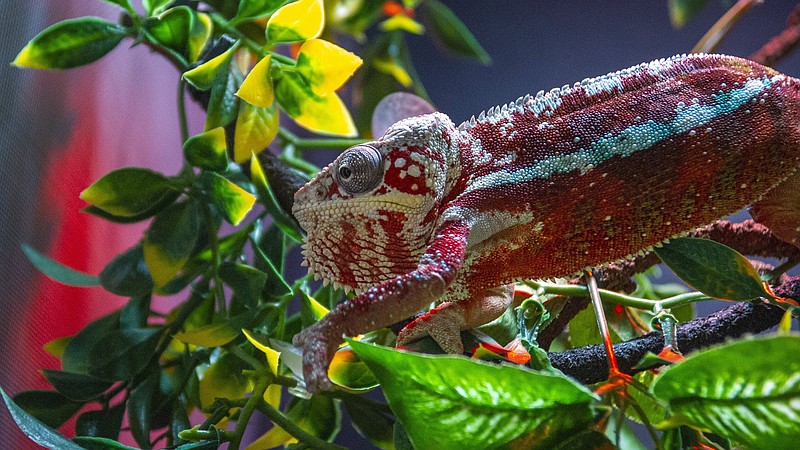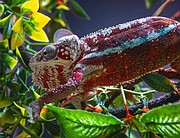The Tennessee Aquarium will open "Island Life" on Friday, March 15, a new exhibit that challenges how "islands" are defined while taking guests on a globe-trotting exploration of isolated ecosystems above and below the water.
"Guests will feel like world travelers while seeing some pretty amazing animals," says Thom Demas, Tennessee Aquarium director of aquatic collections and life support systems.
If you go
› What: “Island Life”› Where: Tennessee Aquarium, 1 Broad St.› When: 10 a.m.-6 p.m. daily› Admission: $34.95 adults, $21.95 ages 3-12› For more information: www.tnaqua.org
"I think visitors will be amazed by flashlight fish, and will love seeing many other species we haven't exhibited previously. Islands are remarkably diverse locations, and in this gallery, we're able to tell quite a few of these stories of biodiversity," he says.
The journey through "Island Life" whisks guests around the world from the frigid waters of the Pacific Northwest to the tropical seas off Southeast Asia to the teeming wilds of Madagascar.
Visitors will be led on their exploration by a scaly guide named Leon the Chameleon. Throughout the gallery, Leon will appear on graphics and interactive elements posing questions that make guests question their understanding of islands and animals on display.
Some of the stops along the way:
» Vancouver Island. Re-creating the waters off the rocky shores of Canada's West Coast, Vancouver Island features a wide variety of colorful anemones, urchins and sea stars. The highlight of this stop will be watching artificially generated waves rush along 20 feet of curved acrylic before crashing against the upright viewing window.
» Indo-Pacific Reef. In the mostly barren expanse of the ocean floor, reefs are like underwater islands, oases of life and refuge to a stunning variety of animals. The Indo-Pacific Reef tank highlights the variety of aquatic life found off the coast of Southeast Asia in a region known as the Coral Triangle.
This expanse of ocean is home to nearly 600 species of reef-building corals and more than 2,000 kinds of fish. This towering, 8-foot-tall tank is the second-largest exhibit in the Ocean Journey building. Guests will see more than 30 species of vibrant reef dwellers.
» Cave of the Flashlight Fish. Inside this dim, mirror-filled room, the darkness will glow with flashes of light courtesy of hundreds of split-fin flashlight fish. This deep-dwelling fish generates light through pockets of glowing bacteria housed in a pouch under its eyes.
‘Island Life’ Interactive Features
>› Visitors can speed up or slow down video footage of a chameleon’s tongue in mid-flight› Do your best clownfish impression by weaving through oversized anemone tentacles› Light up touch-sensitive flashlight fish› Snap selfies atop an enormous bronze sculpture of a Galapagos tortoise
During the day, this fish resides in the darker depths of the ocean before migrating upward at night to feed in shallower water. This gallery's habitat features one of the largest schools ever exhibited of this bioluminescent species.
» Clownfish and Anemones. Thanks to the Pixar classic "Finding Nemo," most people are familiar with the symbiotic relationship of this oceanic odd couple. This exhibit will show how colorful pink skunk clownfish and false percula clownfish have adapted to seek shelter within the venomous, stinging tentacles of bubble-tip anemones, which act like a "living island."
» Marvelous Madagascar. At more than 225,000 square miles, Madagascar is 40 percent larger than California and ranks as the world's fourth-largest island. Because its species have developed in isolation for millions of years, scientists estimate that about 75 percent of this African island's plants and animals can be found nowhere else on Earth.
Guests will become familiar with a wide variety of reptiles and amphibians, including colorful panther chameleons, nimble Madagascar giant day geckos, poisonous mantella frogs and critically endangered radiated tortoises.
"I want people to come away with a whole new appreciation of islands and to expand their thoughts about islands and the animals that live on them," says Jeff Worley, the Aquarium's exhibit designer.
"If we can start that when someone is 3 years old, then by the time they're adults, they'll be thinking differently about the world and maybe acting differently, too."

